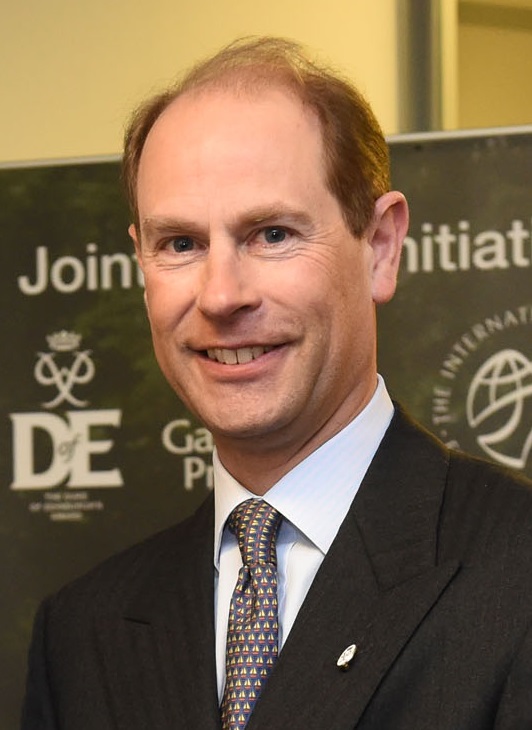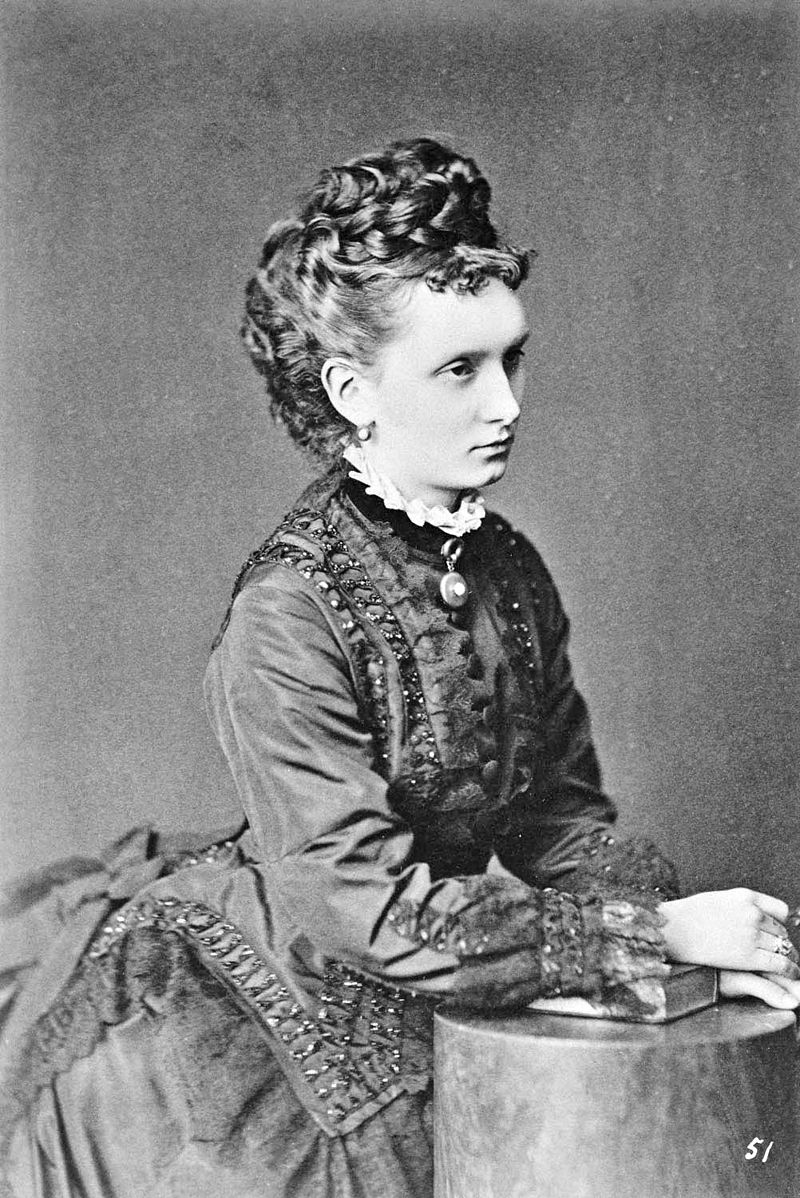by Scott Mehl © Unofficial Royalty 2019

Prince George of Greece; Credit: Wikipedia
Prince George of Greece was the second son and the second child of King George I of the Hellenes and Grand Duchess Olga Konstantinovna of Russia. He was born at Mon Repos, the Greek royal family’s summer residence on the island of Corfu, on June 24, 1869, and had seven siblings:
- King Constantine I (1868-1923) – married Princess Sophie of Prussia, had issue
- Princess Alexandra (1870-1891) – married Grand Duke Paul Alexandrovich of Russia, had issue
- Prince Nicholas (1872-1938) – married Grand Duchess Elena Vladimirovna of Russia, had issue
- Princess Maria (1876-1940) – married (1) Grand Duke George Mikhailovich of Russia, had issue; (2) Admiral Perikles Ioannidis, no issue
- Princess Olga (born and died 1880) – died in infancy
- Prince Andrew (1882-1944) – married Princess Alice of Battenberg, had issue
- Prince Christopher (18881940) – married (1) Nancy Leeds, no issue; (2) Princess Françoise of Orléans, had issue

The King and Queen of Greece with their Children, c1885. Standing L-R: Prince Nicolas, Prince Constantine, Prince George; sitting L-R: Princess Marie, Queen Olga, Prince Andrew, Princess Alexandra, King George I. source: Royal Collection Trust RCIN 2907343
George spent his early years in Greece, living at the Royal Palace and Tatoi Palace, and was raised Greek Orthodox, as required by the Greek constitution. Along with his siblings, he underwent a strict regimen of education and physical activity. They learned several languages including Greek, English, French, Danish, and German. In 1883 George’s mother took him to Denmark to join the Danish Royal Navy. He was placed under the care of his grandfather, King Christian IX of Denmark, and his uncle, Prince Valdemar. The young Prince George, living with Valdemar at Bernsdorff Palace, felt abandoned by his parents and quickly developed a very close relationship with his uncle. Valdemar became the most important person in George’s life and George often professed his love for his uncle. It is widely accepted that they were lovers, and despite both of their marriages, the two maintained their bond and passion for each other until Valdemar died in 1939.
In 1888, a marriage was suggested between George and Princess Marguerite of Orleans (the sister of Prince Valdemar’s wife), however, the negotiations stalled and no engagement took place. Two years later, in 1890, George left Denmark to continue his naval training with the Russian Imperial Navy. The next year, George accompanied his cousin the Tsarevich (later Nicholas II, Emperor of All Russia) on a trip through Asia. While in Japan, one of the guards protecting Nicholas attempted to kill him with his sword. George foiled the assassination attempt by striking the attacker with his cane and saving Nicholas’s life. Although quickly thanked by the Japanese Emperor, George found himself vilified in Russia, accused of placing Nicholas in harm’s way and blamed for the attack. Despite Nicholas’ public statements of appreciation, George was forced to leave Russia and return to Denmark.
Several years later, George and his brothers Constantine and Nicolas helped organize the first modern Olympic Games in Athens, Greece in 1896. Because of his naval background, George was appointed Chairman of the sub-committee for Nautical Sports for the Greek Olympic Committee. Two years later, he was appointed High Commissioner of Crete and served until 1906. At that time, he returned to Europe, living primarily in Denmark and France and making occasional visits back to Greece each year.

Prince George and Princess Marie following their Greek Orthodox ceremony, in December 1907. source: Wikipedia
George first met his wife, Princess Marie Bonaparte, on July 19, 1907 in Paris. The previous year, George’s father and Marie’s father, Prince Roland Bonaparte, a grandson of Lucien Bonaparte, Emperor Napoleon I’s brother, had met and discussed the idea of a marriage between the two families. Following a very short courtship, the couple’s engagement was announced on August 29, 1907. Marie was quite wealthy in her own right, having been left a vast fortune by her mother Marie-Félix Blanc, the daughter of François Blanc, the principal developer of Monte Carlo and the Monte Carlo Casino.
At the time of their marriage, Marie received 800,000 francs per year from a trust, and would later inherit over 60 million francs after her father’s death. As part of the marriage agreement, George agreed to a separation of the couple’s assets and refused any financial settlement from his wife and future father-in-law. Marie retained complete control over her fortune and often helped support other members of the Greek royal family. Once the marriage contract was settled, George and Marie married in a civil ceremony at the Town Hall in Paris on November 21, 1907. The couple’s Greek Orthodox ceremony was held in Athens on December 12, 1907. Despite the arranged marriage and George’s presumed homosexuality, the couple had two children:
- Prince Peter (1908-1980) – married Irina Aleksandrovna Ovtchinnikova, no issue
- Princess Eugénie (1910-1988) – married (1) Prince Dominic Radziwill, had issue, divorced (2) Prince Raymundo della Torre e Tasso, Duke of Castel Duino, had issue, divorced
In 1911, George represented the Greek Royal Family at the coronation of his first cousin King George V of the United Kingdom. The following year, George and his family returned to Greece where he joined the staff of the naval ministry, as Greece was preparing for war against Turkey. He later served as an aide-de-camp to his father, and following his father’s assassination in March 1913, George returned to Denmark to handle the late King’s financial affairs.
The following years saw Greece remaining neutral initially, but later joining the Central Powers, despite the Prime Minister’s support of the Allies. Under threat of an Allied landing, King Constantine I went into exile in Switzerland on June 12, 1917, without abdicating, and was replaced by his brother King Alexander. Following Alexander’s death in 1920, Constantine I was restored to the throne but was forced to abdicate again in 1922 in favor of another brother, King George II. The new king’s reign lasted 18 months before the family was again sent into exile. Through George and Marie’s wealth, several members of the Greek royal family received financial support, including George’s brothers Andrew and Nicholas who came to Paris with their families and settled for a time in homes owned by Princess Marie.

Group photograph taken on the occasion of the 80th Birthday of Prince Valdemar of Denmark, October 27, 1938. Prince George (center, 8th from the left in the center row) and Prince Valdemar (seated in center). source: Royal Collection Trust RCIN 2927432
After many years of upheaval, Greece once again restored the monarchy in 1935 with King George II returning to the throne. The following year, George and Marie returned to Greece for the first time in 16 years, to attend the reburial ceremonies at Tatoi for the remains of King Constantine I, Queen Sophie, and Queen Olga. Upon returning to France, George learned of his son’s relationship with Irina Ovchinnikova – a twice-divorced Russian commoner. Despite his renouncement of the relationship, Peter and Irina married in 1939 – a fact that George and Marie learned from the newspapers. George was furious and refused any further contact with his son. 1939 also saw the death of George’s beloved uncle, Prince Valdemar.
In 1941, with the advance of German forces, the family was once again forced into exile. After traveling to Crete and Egypt, they settled in South Africa in July 1941. By this time, George’s health was declining. Adrift after the death of Valdemar, George finally found solace in the companionship of his wife – for perhaps the first time in their marriage.
Following World War II, George returned to Paris and often represented his nephew, King Paul, on official visits and functions. In 1947, he attended the funeral of King Christian X of Denmark and the wedding of his nephew, Philip Mountbatten (formerly Prince Philippos of Greece) to the future Queen Elizabeth II of the United Kingdom. In September 1948, he attended the enthronement ceremony of Queen Juliana of the Netherlands, and in December was named as one of the godparents of Prince Charles, his great-nephew. In 1949, he returned to Denmark, where he was much loved, for a lavish celebration of his 80th birthday. At that time, King Frederik IX of Denmark appointed him Admiral of the Danish Fleet, an honor that was very meaningful to George because his uncle Valdemar had held that position.

Over the next few years, George worked on his memoirs ‘The Cretan Drama: The Memoirs of HRH Prince George of Greece’, published after his death. In one of his last major royal appearances, Prince George and his wife represented the Greek Royal Family at the 1953 coronation of Queen Elizabeth II of the United Kingdom, his niece by marriage. The photo above shows Prince George and Princess Marie (center of the photo in his robes of the Order of the Bath), in the procession led by his sister-in-law Princess Alice, her daughters, sons-in-law, and several grandchildren.
In his late 80’s, George’s health began to deteriorate. He underwent surgery for a strangulated hernia and later developed hematuria. Prince George died in Saint-Cloud, near Paris, on November 25, 1957, just four days after he and Marie celebrated their 50th wedding anniversary. Nine days later, George was buried in the Royal Cemetery at Tatoi Palace in Greece. Per George’s wishes and because she respected the relationship between George and Valdemar, Princess Marie placed a photo of Valdemar and a lock of his hair in George’s coffin. Prince George was the last surviving child of King George I and Queen Olga.
This article is the intellectual property of Unofficial Royalty and is NOT TO BE COPIED, EDITED, OR POSTED IN ANY FORM ON ANOTHER WEBSITE under any circumstances. It is permissible to use a link that directs to Unofficial Royalty.









































